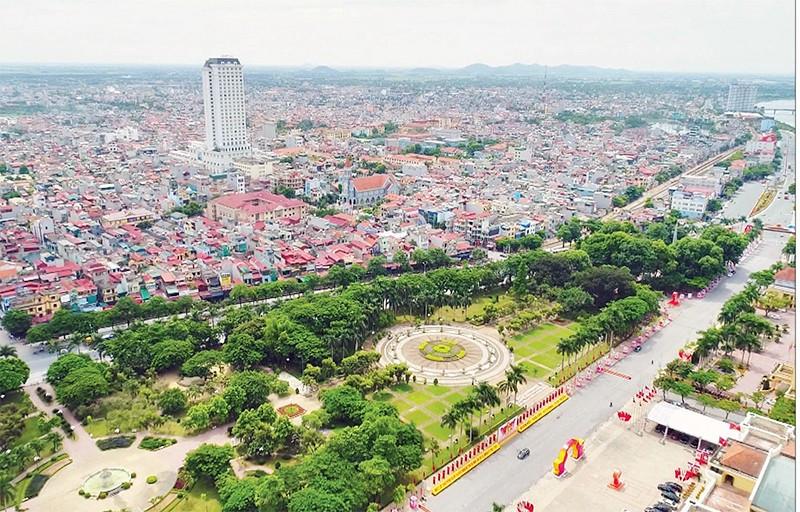Stepping up strategic planning and infrastructure investment
To develop the province into a centrally-run city by 2030, Ninh Binh has focused on reviewing and re-planning the development space based on the potential and advantages of the locality, ensuring unity and synchronicity; studying and planning urban development areas, expanding space, creating breakthroughs in socio-economic development, improving people's lives; mobilising and concentrating resources to invest in modernising urban infrastructure, building smart, bright, green, clean, beautiful cities with their own identity.
According to urban management experts, after merging three provinces, the spatial development orientation of Ninh Binh province has had a quite comprehensive and strategic approach, focusing on exploiting the unique advantages of each region.
Accordingly, for former Ha Nam province area, Ninh Binh has been building urban areas with synchronous and modern technical and social infrastructure, ensuring the quality of life for the people; building smart, green, environmentally friendly urban areas; building rural urban areas in the direction of urbanisation, improving the quality of life for rural people, striving for an urbanization rate of over 60%.
For the Nam Dinh area, the planning identifies communes and wards in former Nam Dinh city as urban areas for cultural development, education and training, science and technology, financial trade and the dynamic economic zone in the Northeast of the province. The province aims to build a synchronous and modern urban system, conveniently connected with major economic and social centres of the Red River Delta.
Particularly for communes and wards in Ninh Binh province, it has been building and developing urban areas based on the outstanding global cultural and natural heritage values of Trang An Scenic Landscape Complex and the historical values of Hoa Lu Ancient Capital; and building modern smart urban areas with their own identity.
Promote investment attraction associated with urban development
Ninh Binh province after the merger has a natural area of about 3,942km2, a population of more than 4.4 million people. It is a province with an important and strategic geographical location, is the "gateway" to the South of the Northern Delta, belongs to the North - South economic corridor; the coastal economic corridor of the Gulf of Tonkin and the East - West economic corridor; and a transit connection point of three economic regions: the Red River Delta, the North Central and Central Coast, the midlands and mountainous areas of the North.
Regarding the economic sector, Ninh Binh province has formed distinct economic zones. The northern area of the province focuses on developing industry, high technology, high-quality human resource training centres, and high-quality medical centres.
The provincial centre develops heritage tourism associated with service and trade development. The southern area of the province develops marine economy, heavy industry, and energy industry.
Tran Quang Huy, Director of the provincial Centre for Investment Promotion and Enterprise Development Support, said that, according to the development orientation, in the coming time, Ninh Binh province plans to add 53 industrial parks with an area of 12,144 hectares, of which 20 industrial parks have been put into operation with an average occupancy rate of 50%; 12 industrial parks have been established and are clearing land to build infrastructure to attract investment; 3 industrial parks with approved planning are attracting infrastructure investors; 18 zones are organizing planning and researching to propose planning.
The province focuses on attracting and developing industry, especially high-tech, processing and manufacturing industries, creating the premise to build Ninh Binh into one of the important industrial centres of the region and the whole country.
In addition, Ninh Binh province also focuses on forming a number of new growth poles; green growth based on accelerating the transformation of urban economic structure; improving service quality, strongly developing digital economy, circular economy, sports, tourism and service industries.
Director of the Department of Construction Nguyen Van Luong said Ninh Binh province strives to become a centrally-run city by 2030, with modern industry, high-quality tourism services, and green urban areas associated with heritage. To achieve the above goal, the province will focus on planning and planning management, building and renovating urban areas towards smart, green urban areas, developing other urban areas in the province to support the development of central urban areas and reasonable population distribution.
At the same time, the province also orients the development of communes with towns and townships (formerly) into wards, striving to achieve the urban ratio according to regulations, ensuring the set goals.
